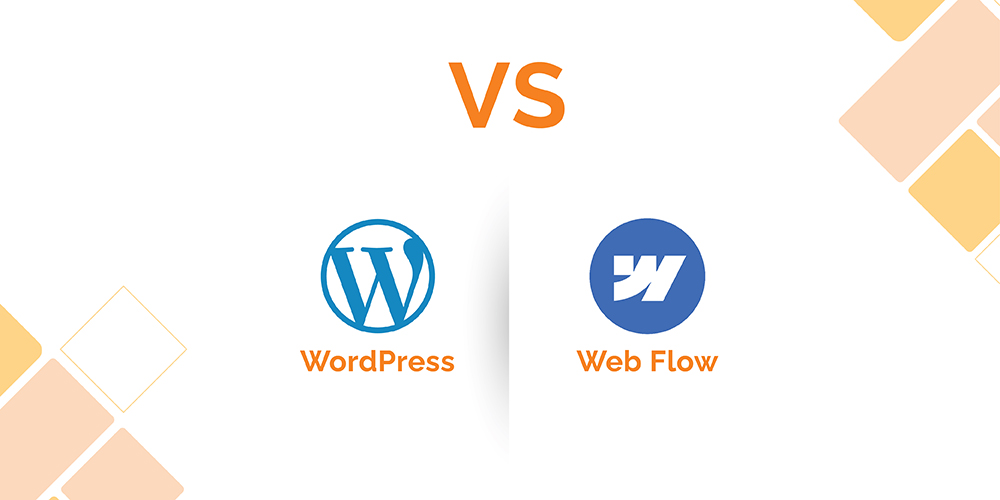
We will talk about WordPress and Webflow in this particular blog, where we will try to understand which one is better.
To begin with, we all know that WordPress and Webflow are the content management systems used for various purposes around the world by businesses, bloggers, marketers & agency owners.
With a market share of around 43%, WordPress is widely used and favorable compared to Webflow because of its functionalities, features & popularity. However, there are many different aspects to look at when comparing Webflow and WordPress for many reasons.
- Design flexibility- Both platforms are open source, as we can compare, but there are specific features from the developer’s point of view. Webflow provides complete freedom to design your website. In contrast, WordPress has options to either develop a customized website or use available themes from a vast marketplace to choose from, which is a good point over Webflow for every user.
But here is the thing, WordPress has a fantastic community and support system that makes it unique while choosing an open-source CMS. - Functionalities – If you want to add any of the functionality in WordPress, it provides tons of options in plugins that you can install and get started. But in Webflow, you do not get options just like plugins in WordPress. If you want to extend a specific functionality, you will need to integrate it with code snippets which, otherwise, if you are good, can do it.
- Ease of use – When talking about developing a website using Webflow, you have many ready-to-click options that have a clean and seamless layout to work on. But compared to WordPress, it has the default block editor, and you cannot use other page builders just like we do in WordPress using Elementor, Beaver Builder, or WPBakery Page builder. On the other side, WordPress has a block editor, which can be replaced with page builders if you feel that enhancing the look, design, functionalities, navigation, and layout is your concern.
- Development cost – WordPress is always a better option for development because it provides all that you require at such a reasonable rate. Still, when it comes to Webflow, you have to pay an extra amount to make it live or accessible to other people. The market size of WordPress is enormous compared to Webflow, which very few people know and do not have good features at this point.
- Creating eCommerce Stores – If you have an offline business and are looking to skyrocket your sales through an online medium, this is the perfect time to get started: WordPress and Webflow help you create an eCommerce store for your business. WordPress offers a free plugin called WooCommerce, which is popular and has tons of essential features required to manage your online sales. In addition, WooCommerce has a lot of scope for multiple payment integrations that provide users the flexibility to choose from a wide variety of payment options.
While talking about Webflow, it has simple, easy to go but limited eCommerce store functionalities that can help you to get better online visibility. However, if you are looking to sell the subscription or membership-based products, then Webflow is not a good choice for you to get started. Webflow, compared to WordPress, charges higher for transactions and lesser features for your store.
Conclusion
We have seen from a different perspective that WordPress stands tall when it comes to reliability, features, functionalities & design options compared to Webflow, which has lesser acceptance among businesses worldwide because of its limited features & functionalities. So, this is when you need to consider WordPress for your business website that helps achieve your goals within a proposed budget.

I would highly recommend Rahul for website development and maintenance. The customer service has been prompt, Rahul has worked closely with us to provide a site that met all of the criteria that we were looking for.